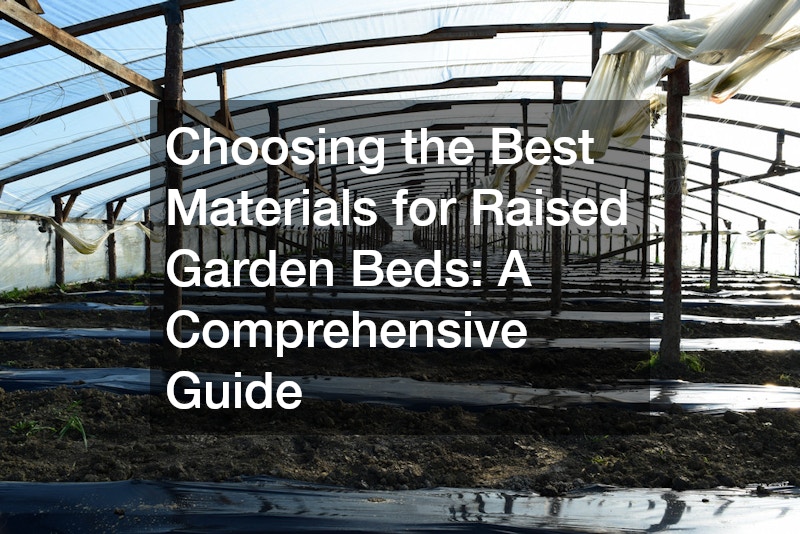

Raised garden beds are a popular choice among gardeners for many reasons. They offer better control over soil quality, improve drainage, and extend the growing season by warming up more quickly in the spring. However, one of the most crucial decisions when setting up a raised garden bed is selecting the right material. The choice can impact the bed’s durability, cost, and the health of your plants.
In this guide, we’ll explore the most common materials used for raised garden beds and help you decide which is best for your needs.
Metal Metal is a durable and long-lasting option for raised garden beds. It offers a modern aesthetic and can be quite economical, depending on the type of metal you choose. Metal planters are easy to install and can withstand various weather conditions. However, there are some drawbacks to consider. Metal can heat up quickly in the sun, potentially harming plant roots and causing the soil to dry out faster. Additionally, certain fertilizers can react with the metal, leading to the release of unwanted substances into the soil. To avoid water pooling and root rot, it’s advisable to use metal planters without bottoms, allowing for proper drainage.
Stone or Brick Stone or brick raised garden beds are a timeless and elegant choice that can last for decades. They are sturdy, resistant to weather, and add a classic look to any garden. The downside to using stone or brick is the cost. Both the materials and the labor required to build these beds can be expensive. If you have the skills and time to construct it yourself, this option can be more affordable, but it’s still a significant investment compared to other materials. For those seeking a natural and long-lasting solution, stone or brick is an excellent choice, provided the budget allows.
Plastic or Composite Plastic or composite materials are becoming increasingly popular for raised garden beds due to their durability and resistance to rot. Composite decking materials, for instance, are designed to withstand outdoor conditions and can last for many years without needing replacement. They are also relatively lightweight and easy to assemble. However, not all plastics are safe for gardening. Choosing products specifically designed for outdoor use is essential, as some plastics can leach harmful chemicals into the soil. When selecting plastic or composite materials, ensure they are labeled as food-safe and intended for gardening use.
Wood Wood is the most traditional material used for raised garden beds and remains a favorite due to its availability, ease of use, and natural look. The key to using wood successfully is choosing the right type. Hardwood options like redwood, cedar, and cypress are naturally resistant to decay and can last many years without treatment. Softer woods like pine are more affordable but may only last a few years before they start to rot, especially if untreated. Avoid using treated woods like railroad ties or pallet wood treated with chemicals, as these can leach toxins into the soil.
Conclusion The best material for your raised garden beds depends on your specific needs, climate, and budget. Metal offers longevity but may have heat and chemical concerns; stone or brick provides durability at a higher cost; plastic or composite materials offer low maintenance and long life; and wood gives a natural look with varying levels of durability depending on the type. By carefully considering these factors, you can choose the material that will give you the most satisfaction and success in your gardening endeavors.
.


